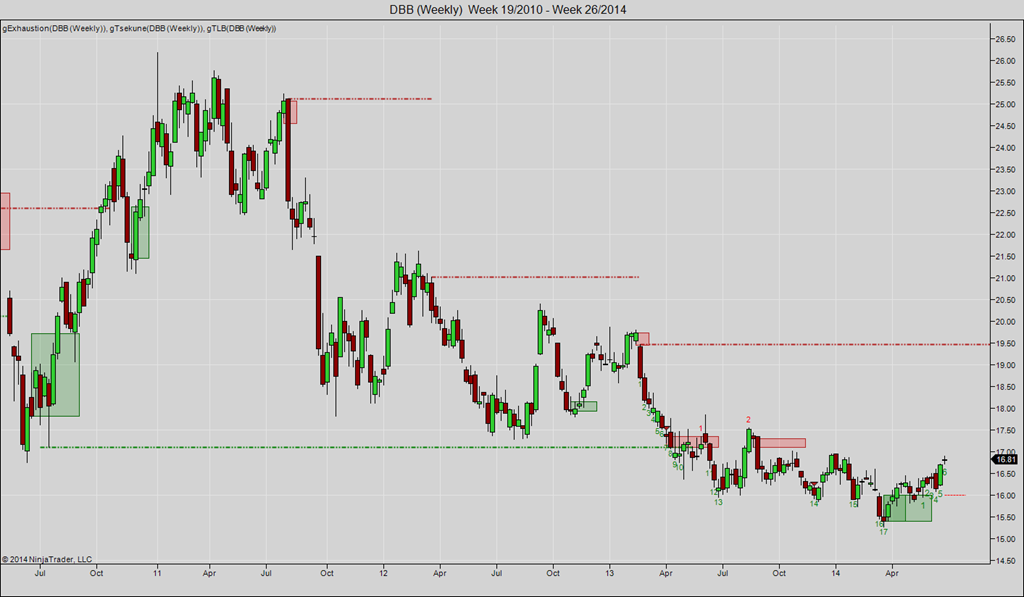Don t rely on base metals as a leading indicator Opinion Don t rely on base metals as a leading
Post on: 16 Март, 2015 No Comment

Investors swear by base metals as a leading economic indicator but rampant speculation is skewing its effectiveness as a guide.
2fcontent%2fcopper+wire.jpg&h=175&w=265&c=1 /%
Using copper and base metals as a leading economic indicator has long been an easy and popular general indicator of global health.
Theres some merit to this. Price movements in metals have historically foretold economic problems to come. For example, hot-rolled coiled steel peaked in 2004 before the financial crisis of 2008. New buildings, cars and many other products were driving up the price up until 2004 before demand waned.
So should we be running to the hills given some of the recent data? Base metal markets have been in a trough. The prices for aluminium, copper, lead, nickel, tin and zinc (except in Shanghai) dropped in late May.
In May 2012, base metals prices on the London Metal Exchange (LME) in aggregate fell by 4%, 19% lower than prices a year ago. The price of copper, which is widely regarded as the leading indicator of base metals, dropped 30% between early March and mid-June.
You may be safe where you are, though. Its clear that base metal prices have been affected by supply and demand, but also, it has also become the favourite tool of speculators. And thats what is driving prices.
Just look at China
It is estimated China accounted for around 40% of the total base metals consumption in 2011, and Chinas contribution to global growth will be more than 40% (India and the US only account for 15% each) in 2012. Data on Chinese imports of base metals are not discouraging. Chinas copper imports surged 65% in May compared to one year ago.
Chinas consumption of other base metals is still growing, but these numbers can be deceiving. Imports of copper have largely gone into bonded warehouses at ports, or at exchange warehouses. It has also been used as collateral when lending costs were high. This is is not the first time China has imported metals for reasons other than manufacturing. During 2009-2010, China stockpiled steel, iron ore and copper while prices were low.
Speculate on this
Since 2008, there has been a strong relation between the LME cash price for copper and the number of net long positions by non-commercial traders in US commodity markets.
Index speculators have bought more commodities futures contracts recently than any other market participant, making them the single most dominant force in the commodities futures markets. And their buying and trading has nothing to do with the supply and demand fundamentals of any single commodity. They pour money into commodities futures to diversify their portfolios, hedge against inflation or bet against the dollar.
The four largest commodity swaps dealersGoldman Sachs, Morgan Stanley, J.P. Morgan and Barclays control an estimated 70% of the commodity index swaps positions.
So if they are speculating and not based on fundamentals then the once useful global economic indicator has suddenly lost its shine as a crystal ball.
So what should you look at?
It is hard to draw a strong conclusion on what the base metal markets presently signal, but the Chinese economy is clearly experiencing difficulties. It only grew 8.1% in the first half of this year, the lowest since the second quarter of 2009. Manufacturing activity, retail sales and fixed asset investment have all slowed, weighing on Chinas end-user demand for base metals. The Chinese government responded with monetary easing and fiscal stimulus. There has also been an increase in investment projects approved by the National Developing and Reform Commission of China. Although growth in Chinese real estate investments accelerated in May, the property sector does not hold the momentum it experienced a few years ago, and it too is a speculators game.
Treasurers should consider monitoring The Conference Board Leading Economic Index (LEI). The June publication of the index for China reveals the LEI for China increased 1.1% in May, with total loans issued by financial institutions making the largest positive contribution to the index.
In May the leading economic index increased by 6.6% (about a 13.7% annual rate) between November 2011 and May 2012, up from 5.2% for the previous six months. Loans and purchased floor space make the largest contributions to it so far this year.
The recent behavior of the composite indexes and their components suggest that the current rate of Chinas economic expansion should continue, and maybe even pick up slightly in the near term.
Even if the recent weakness of base metal markets do hint at the probability of the end of the commodity supercycle and a shift of the global economy, it makes more sense to analyse broader economic indicators if you are trying to predict the future.














